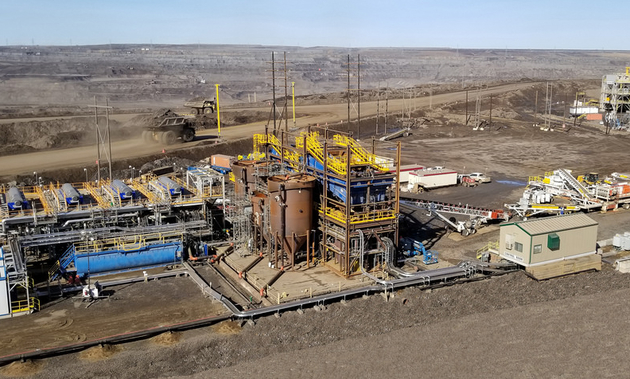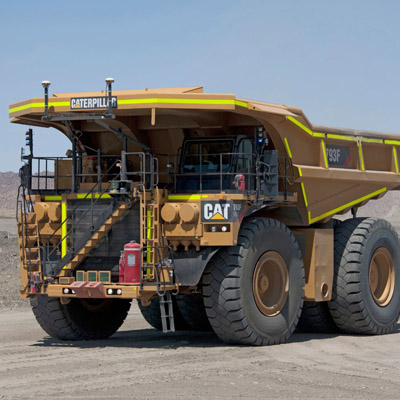Innovating a better future
Canadian Natural Resources Ltd. (CNRL) has received $5 million in funding for their innovative in-pit extraction process (IPEP)

CNRL's in-pit extraction process aims to reduce costs and greenhouse gas emissions. — photo courtesy CNRL
Emissions Reduction Alberta (ERA) funds projects that create a better future for Albertans. Canadian Natural Resources Ltd.’s (CNRL) goal to reduce Alberta’s greenhouse gas emissions aligns with ERA, and the resource company has received $5 million in funding for its in-pit extraction process (IPEP). With the help of Titanium Corporation, CNRL is developing an oilsands tailings treatment system that is posed to eventually become an alternative to conventional oilsands mining and ore processing.
About the in-pit extraction process
CNRL’s IPEP places the bitumen and extraction plant right in the mine pit, instead of traditional methods of extracting bitumen outside the mine pit. This process has a few benefits. First, it produces dry, stackable tailings that can support reclamation immediately. That means the reclamation process is shortened by decades and tailings ponds are eliminated. The location of the plant reduces the number of haul trucks, length of pipeline, and energy required to pump material. It is cost effective and has proven greenhouse gas (GHG) reductions of approximately 40 per cent.
The project was inspired by a desire to reduce both costs and carbon footprint.
“The goal was to come up with new technologies that were a much lower capital and operating cost, so we could be comfortable in expanding oilsands development,” said Joy Romero, vice president, Technology and Innovation, at CNRL. “We took what we did (and) threw it up in the air to see how we could do it differently. The result was a solution that is much less energy intensive.”
The project, several years in the making, is moving through piloting. There are things to improve after each pilot, but fundamentally the first one worked. Now, the company is working to make the process better.
“We had to prove: Do we really get dry stackable tailings from this? Yes, we do. Do we really see a reduction in GHGs? Yes, we do,” said Romero. The next challenge is to see how the process performs in the extreme winters typical of oilsands areas.
Driving innovation in a traditional industry
CNRL takes pride in its innovative work culture. What is innovative about the IPEP is that it uses off-the-shelf equipment in a new way. It is more like a plug-and-play style of development because all the equipment is off the shelf. Pieces can be replaced to find what works best.
The reaction to the IPEP “has been very positive. It’s been such a change,” Romero said. “It’s so much simpler and more elegant. Everyone is excited about this.”
Innovation doesn’t stop here. CNRL wants to implement processes moving forward that are cost competitive while reducing carbon emissions. The company has already incorporated quite a few new processes already—IPEP is not the first, nor the last.
“This is very exciting for the industry, not just us,” said Romero. “This is a significant change for the industry, both for cost and the environment. It opens doors for the industry.”
The entire company is behind this shift.
“Our people are drivers. They make things happen,” Romero said. “We talk a lot about working together. We have a culture of innovation, but unless you work together, no one person can make something happen.”
Romero leads her team with the help of the company’s passion for innovation. “The most rewarding part of my job is I get to help people realize their vision and dreams for innovation within the company,” she said. “That’s an absolute privilege.”
On the other hand, “The most challenging aspect is helping people understand the true facts about our industry,” Romero said. CNRL hopes to spread that knowledge, specifically the progressive and forward-looking nature of the industry and CNRL’s role within it.
Despite the challenge of raising awareness, the in-pit extraction process is proving to be promising. The best part about the IPEP? It is applicable to all mined oilsands operations and can also be applied to other types of mining operations.




